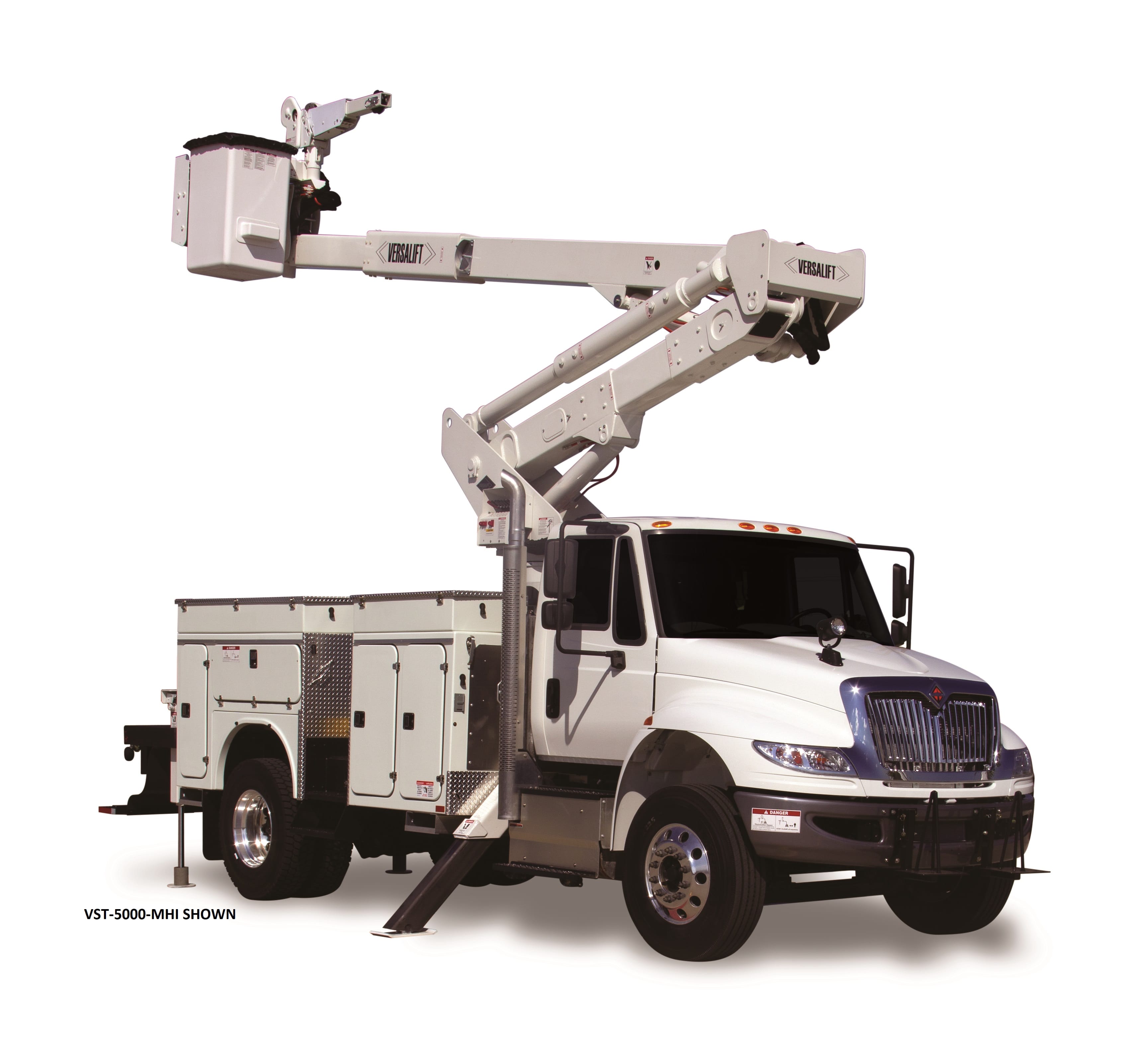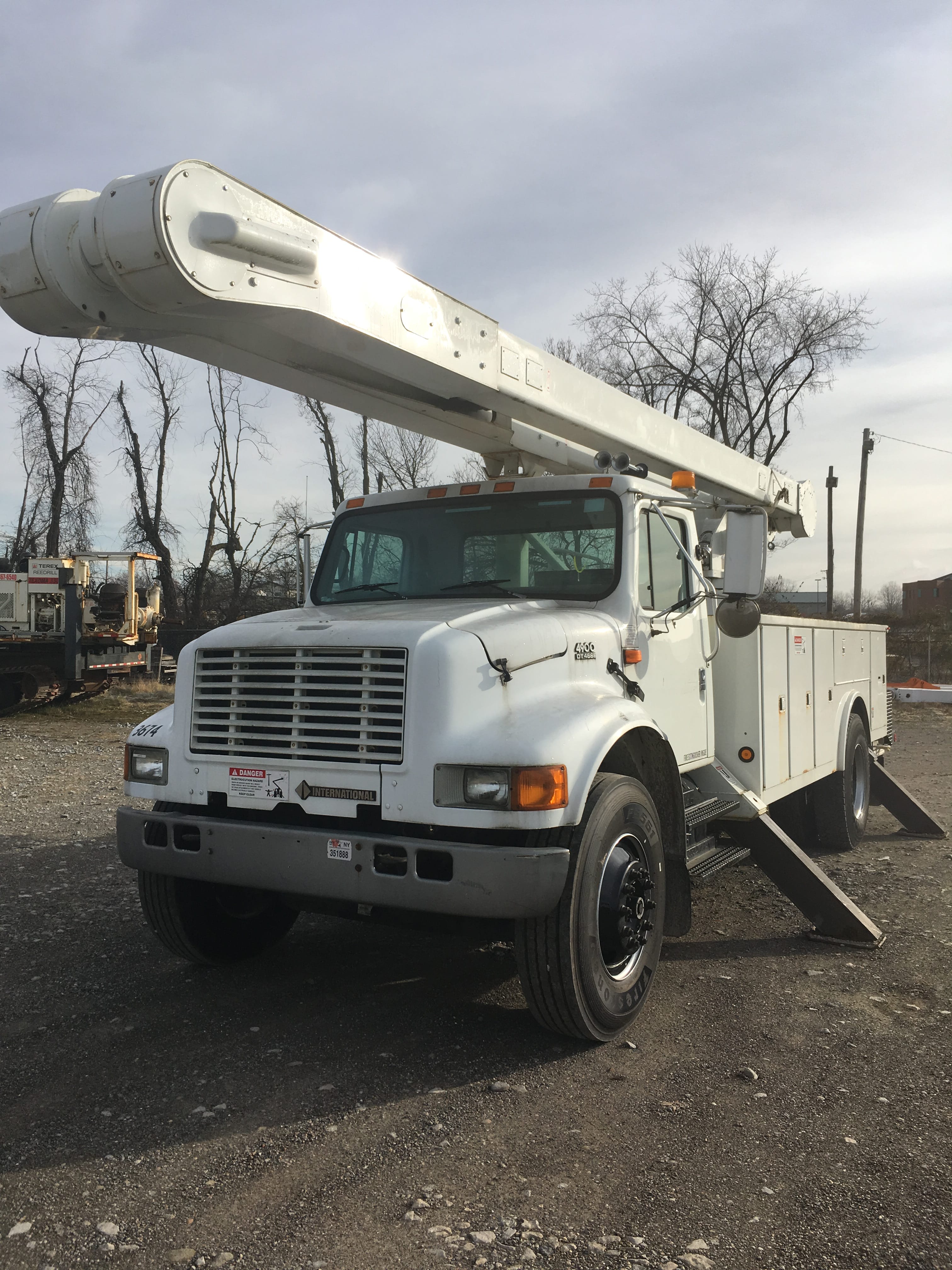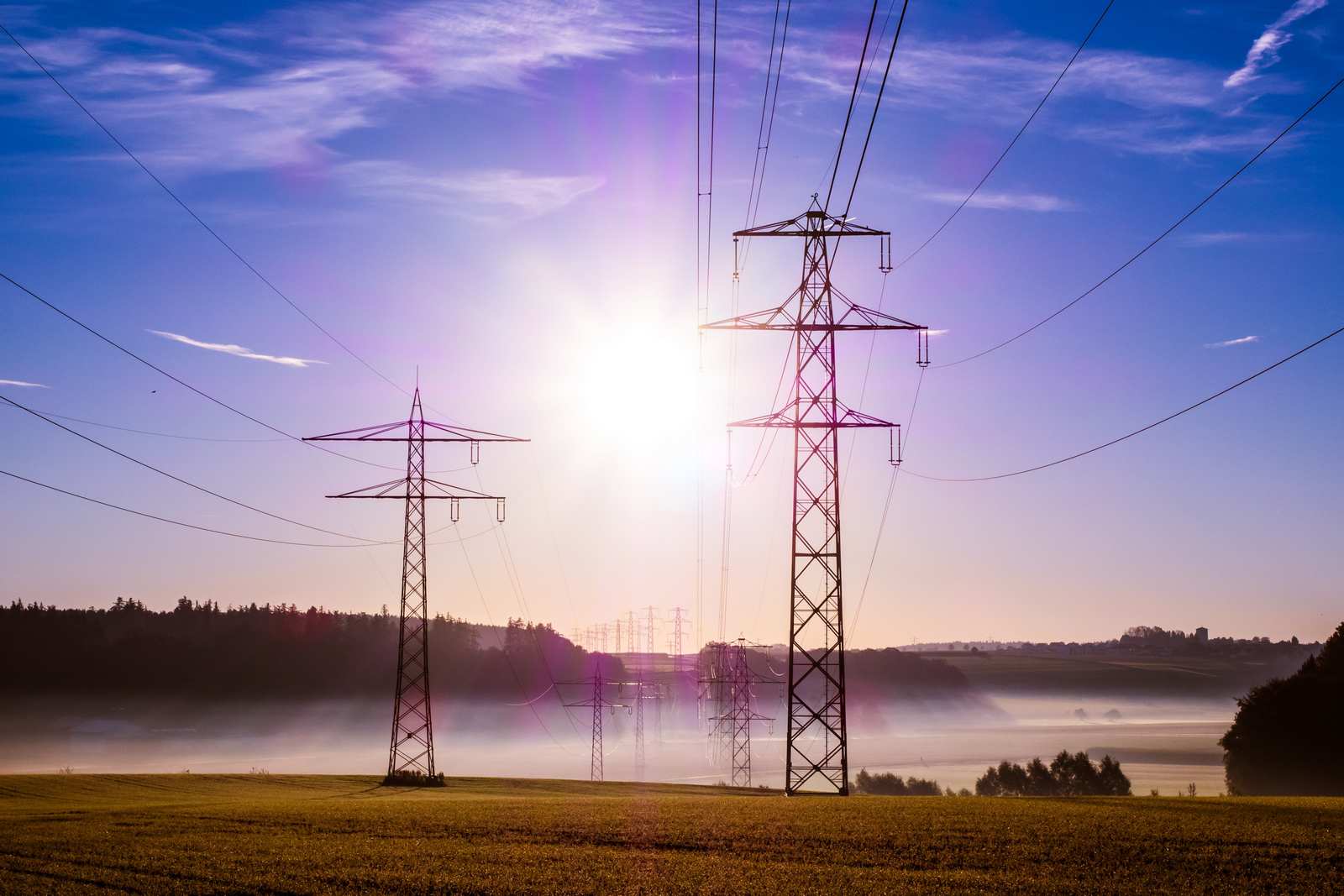Aerial lifts in Alaska
Versalift Aerial Lifts Support Key Alaska Industries
Aerial lifts are critically important to the function of basic electrical and telecommunications services across the huge expanses of the Union’s largest state. As is the case with every geography, Alaska’s need for vehicle-mounted aerial lifts crosses into many industries, including forestry, mineral extraction, wind turbine maintenance, visual communications and others. Interestingly, more than 95 percent of Alaska’s total geography is considered to be public land, which makes maintaining it the responsibility of state and federal land management groups. Highway lighting and road signals, which require truck-mounted aerial lifts for ongoing maintenance, are predominantly managed by the Alaska State Department of Transportation (https://www.dot.state.ak.us/).
Distributors for Alaska

Electric Power and Utility Industry in Alaska
Alaska has an economy that is powered by the energy industry. With enormous reserves of oil, the state is as mineral-rich as any of the 50 United States. As a top-5 producer of crude oil in the nation, Alaska also is a top-three extractor of natural gas. Natural gas and diesel are easily the most heavily used sources of petroleum fuel. The state is committed to generating 50% of its electricity from renewable sources by 2025, which is ambitious. Currently, the state exceeds 25% from existing hydropower programs. Wind energy projects, currently rated as the lowest cost per MWh, will require high reach aerial lifts for the purpose of maintaining wind turbine blades and associated systems, as Alaska moves towards its goals.

State Utility Companies
Aerial lifts support the work of all of the electric utility providers in the state of Alaska, whether they are Alaska Electric Light & Power, which is the state’s only Investor-owned Utility, or they are part of a co-operative, like the Golden Valley Electric Association, which serves Fairbanks and much of the interior of the state of Alaska. The utility organizations don’t reach everyone in Alaska, however. There is a significant population in the state that heats its homes and powers its businesses with diesel fuel-burning generators. As infrastructure is upgraded and expanded to serve a growing population in the state, utility contractors and power companies will need the safest and most reliable bucket trucks available to help them do their important work.
View LiftsTelecommunications Construction & Maintenance in Alaska
Cable television, high-speed internet and telephone land lines rely heavily upon data cable for their high levels of fidelity, quality and consistency. Data cable is usually strung overhead, which allows it to follow the routes of normal neighborhood electric distribution line. Hung at a height of at least fifteen feet, data cable is crucial to the regular flow of information that makes modern businesses able to function. Alaska does have a number of telecommunications service providers that offer business internet services, residential services and cable television, all of which compete for business. GCI is one such example, an Alaska company with special services for their Alaska customers.
State Telecomm and CATV companies
To read more deeply on how Versalift aerial lifts support organizations in the telecommunications business, please read our telecommunications industry page here. Only one regional telephone service provider, which can also be known as a Regional Bell Operating Company, operates in Alaska, and it is called Alaska Communications. Other telecommunications providers in the state include Alaska Power and Telephone Company, Alaska Communications, GCI,Cordova Telephone Cooperative, Matanuska Telephone Association, Tel Alaska, Copper Valley Telephone Cooperative
View Lifts
Alaska
With a population of more than 800,000 people, Alaska is the 49th United State and is known as the Last Frontier. Mineral extraction has always figured significantly into the life of Alaska, with the extraction industry creating more than one third of the state’s economic output. The richness of Alaska’s petroleum resources are very important to the United States, as are its strategic reserves of timber and fresh water. Denali National Park is an important area for tourism in Alaska, as are the Mendenhall Glacier, Katmai National Park and Sitka National Historical Park. The people of Alaska are very diverse. There is a large population of Alaska Natives, including Aleuts, Eskimos and Native Americans, which together, represent more than 150,000 people in the state of Alaska. The capital city of Alaska is Juneau, while the largest urban area in the state is Anchorage. Fairbanks is the other major concentration of people in the state of Alaska.
Anchorage, Alaska
Anchorage is easily the largest city in Alaska, with a population of more than three hundred thousand, and a geographical size of nearly 2,000 square miles. The city of Anchorage is, by itself, larger than the state of Delaware, and approximately two out of every five Alaskans live there. Anchorage abides by Alaska Standard Time, which is one hour behind Pacific Standard Time. Anchorage is equidistant to three of the world’s most significant population hubs – Tokyo, Frankfurt and New York City – and so Anchorage Airport is a bustling logistical waypoint and hub for companies such as FedEx. The Port of Anchorage receives 95% of surface-bound goods heading for Alaska. Major economic drivers in Anchorage include resource extraction, military, logistics and shipping, and is a regional corporate headquarters for several major corporations.
Fairbanks, Alaska
Fairbanks is the seat of the interior of the State of Alaska. It’s population, which is less than 35,000, represents the concentration of the one hundred thousand Alaskans who live in the North Star Borough. The North Star Borough is a huge piece of Alaska’s geography and is the Metropolitan Statistical Area that sits around Fairbanks. Nestled in the Tanana Valley, Fairbanks is home to the University of Alaska, which is the founding campus of the University of Alaska system. Fairbanks was founded in 1901, when a confluence of events and people led to the establishment of the city’s first trading post and gold prospecting operations. Interestingly, the Aurora Borealis, also known as the Northern Lights, can be seen from Fairbanks on more than two hundred nights per year.
Juneau, Alaska
Juneau is the Capital of the State of Alaska, and has the distinction of being a state capital that is entirely inaccessible by land. Sitting in the Gastineau Channel, on the Alaskan Panhandle, Juneau is built at sea level. It is surrounded by incredibly rugged terrain and ice fields, making it essentially an island that must be approached either by sea or by air. Because Juneau is Alaska’s capital, the largest employer is the government, and this includes the airport, harbor, school district and public university, but tourism is a huge economic driver, and the region’s history of mineral prospecting tells a fascinating story. Juneau is home to hundreds of commercial fishing operations and also home to Alaska Seaplane, an American airline.
Notes on Aerial Lift Safety from the United States Department of Labor
Alaska Aerial Lift Safety
Alaska Aerial Lift Safety is strictly enforced throughout the state, which follows the United States federal guidelines for equipment safety. Federal guidelines for aerial lift safety can be found at the US Department of Labor OSHA office. In the state of Alaska, all organizations that use truck-mounted aerial lifts in any capacity, be they electrified, at a great height, or potentially hazardous in any way, are required to follow these basic safety guidelines.
Bucket Trucks and their applications for Forestry in Alaska
Forestry bucket trucks that support Versalift customers in Alaska are built to withstand some of the most brutal weather conditions on the planet. Forestry will always be a tough business, but forestry work in Alaska, which is known as the Last Frontier, is especially rugged, cold and inhospitable. More than ninety five percent of Alaska is publicly owned land. As a result, the land management and forestry responsibilities for local state, federal and territorial organizations are enormous. Some of the most significant national parks in the United States are in Alaska, including:
Aerial lifts used in maintenance of telecommunications and cable television infrastructure in Alaska
Alaska has a relatively small population that spans a vast area, which creates challenges in building and maintaining viable networks of overhead telecommunications plant. Further, the hugely rugged countryside and impassable natural boundaries of Alaska make advancing and upgrading wired communications networks across the state effectively impossible. With that said, all of the three major urban areas in Alaska are wired for broadband data and cable television. The path forward for Alaska’s next wave of communications improvements will come through wireless communications. The effort to make broadband internet available to all of Alaska’s residents is ongoing, and major telecommunications providers, including AT&T, are investing in broadband wireless networks.
Aerial lifts used for maintenance of electric power infrastructure in Alaska
Aerial lifts that are equipped to maintain electric power infrastructure in Alaska face the same kinds of workplace hazards and challenges that any insulated aerial lift must face. Additionally, they must be incredibly durable in order to be able to handle Alaska’s extreme weather conditions. It is a good idea for any vehicle-mounted aerial lift to offer significant payload capacity, as distances between communities are very high, and it is important to be able to carry plenty of equipment, parts and materials. Insulated aerial lifts are crucial in order to mitigate some of the hazards of hotline work. All Versalift insulated aerial lifts are equipped with the TruGuard™ safety system, which provides linemen with an additional layer of protection when they are working at the platform.
Aerial lifts for Bridge Inspection in Alaska
Bridge inspection in Alaska is an ongoing process that is mandated by the Federal Department of Transportation. Every other year, each state in the United States must prepare a report on the condition of its bridges. The state of Alaska manages more than one thousand bridges, and uses its own aerial lifts and other bridge inspection equipment, as well as the significant help of bridge inspection engineering companies, to inspect, certify and maintain its bridges. Industry leading bridge inspection equipment, and many other vehicle-mounted aerial lifts are available in Alaska through Aspen Aerials, the North American leader in bridge inspection equipment at https://aspenaerials.com.
